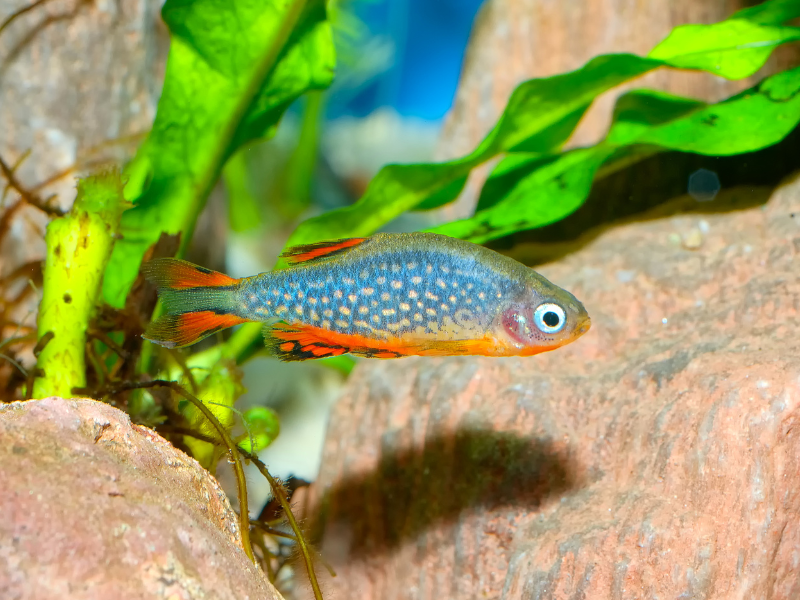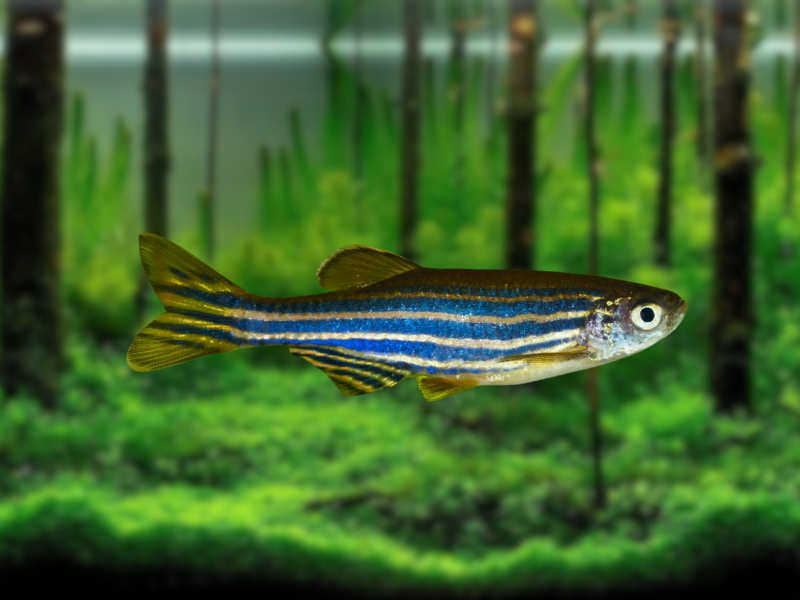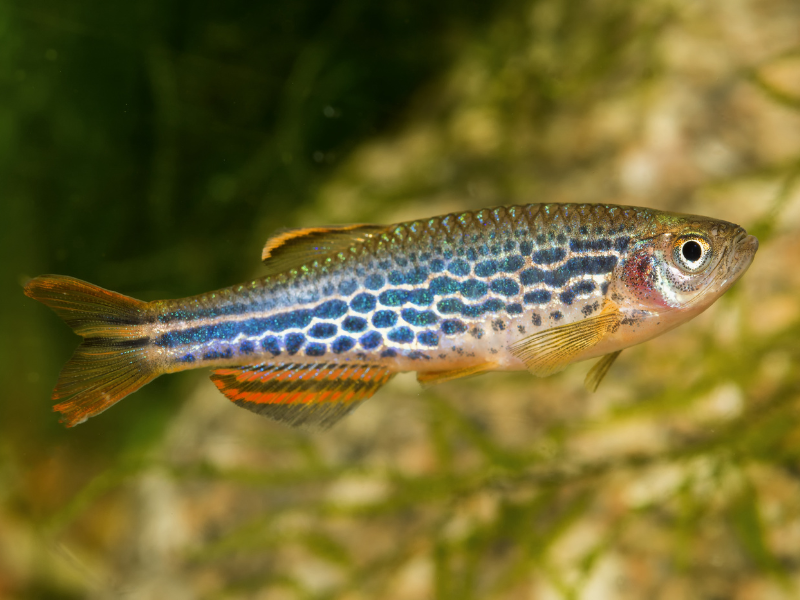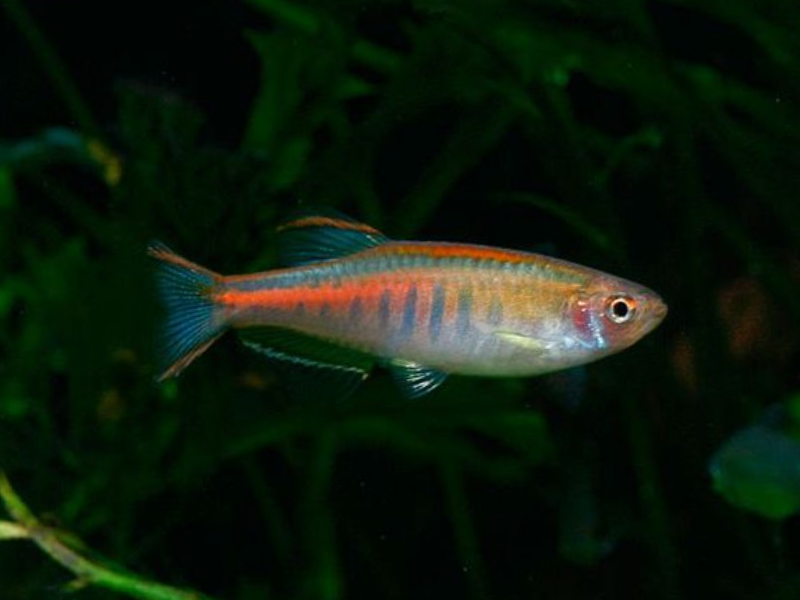Danio margaritatus
Celestial Pearl Danio

Scientific Classification
Quick Stats
Aquarium Building Information
About This Species
Basic Description
Detailed Description
This species originates from the calm, shallow, and densely vegetated waters of Asia, a habitat that dictates its requirements in a home aquarium. Its streamlined, fusiform body is perfectly adapted for darting through aquatic plants and its moderate activity level is best observed in a well-structured environment. To ensure their well-being, it is crucial to maintain them in schools of at least a half-dozen individuals, if not more. A larger group not only provides security and reduces stress but also encourages more dynamic social interactions and natural behaviors. In solitude, they are prone to reclusiveness.
In terms of aquarium setup, a tank with gentle water flow is paramount, replicating the slow-moving ponds and streams of their native range. They are primarily a mid-to-bottom dwelling species, so providing ample cover in the form of plants, driftwood, and rockwork will make them feel secure. Their diet is omnivorous, and in the wild, they consume small invertebrates, algae, and organic detritus. In captivity, this should be replicated with a high-quality, varied diet. A rotation of crushed flakes, micro-pellets, and various frozen, freeze-dried, or live foods will ensure they receive all necessary nutrients. Their small size contributes to a low bioload, meaning they produce minimal waste relative to other fish. However, like any aquatic creature, they still require pristine water conditions, which can be maintained through regular partial water changes and adequate filtration. Their metabolism and oxygen needs are low, but a well-maintained system is still essential for their long-term health. These fish are known to browse on biofilm, contributing to the aquarium's micro-ecosystem.
Scientific Description
Danio margaritatus is a small cyprinid belonging to the family Danionidae. Since its discovery, this species has undergone taxonomic re-evaluation, having been initially placed in a new genus before being assigned to the genus Danio. This classification reflects its morphological and genetic relationship to other danionins. Its fusiform body shape is a common trait among active swimmers in the family, providing hydrodynamic efficiency for its characteristic quick movements.
Ecologically, this species fills the role of a micro-predator and omnivore, feeding on small crustaceans, worms, insect larvae, and plant matter, including biofilm. This dietary flexibility allows it to thrive in its biotope. Its origin is specific to shallow, densely vegetated, alkaline freshwater bodies in parts of Asia. Investigations into its wild populations have been limited, leading to its classification as Data Deficient (DD) on the IUCN Red List. This status highlights the need for further research to assess its population trends and potential conservation threats.
Physiologically, it exhibits a low metabolic rate, low oxygen consumption, and consequently, a low rate of waste production. These factors result in a relatively low bioload factor, making it an interesting subject for studies on ecosystem dynamics in smaller aquatic habitats. Socially, it is an obligate schooling species. Group living is a critical component of its life history, influencing foraging efficiency, predator avoidance, and reproductive behaviors. Studies of its behavior in controlled environments confirm that social isolation leads to heightened stress and atypical behaviors, underscoring the importance of conspecific interaction for its welfare.
Breeding Description
Successfully breeding this species is considered a moderately challenging but achievable endeavor for the dedicated hobbyist. These fish are egg-scatterers, meaning the female will release her eggs over suitable surfaces while the male fertilizes them, without any further parental care. To encourage spawning, it is recommended to set up a separate breeding aquarium. This tank should contain soft, acidic water and be heavily planted with fine-leaved aquatic plants, or furnished with spawning mops, to provide a substrate for the eggs to adhere to and offer some protection from the adults.
For an optimal breeding outcome, a conditioned group with a higher ratio of females to males is advisable to diffuse the male’s persistent courtship behavior. Once the fish are introduced to the breeding tank, spawning is often triggered by small, frequent water changes with slightly cooler water and an abundance of high-protein live and frozen foods. Spawning typically occurs in the early morning. A key challenge is the tendency of the adult fish to consume their own eggs and fry. Therefore, it is crucial to remove the adult fish from the breeding tank immediately after spawning is complete. The eggs will hatch within a few days. The newly hatched fry are minuscule and will initially sustain themselves on their yolk sacs. Once they become free-swimming, they must be fed microscopic foods such as infusoria or commercially available liquid fry food. As they grow, their diet can be gradually transitioned to include baby brine shrimp and finely crushed flake food.
Generate Printable Card
Create a printable card for this creature to display in your store or aquarium. The card includes a QR code for quick access to more information.


